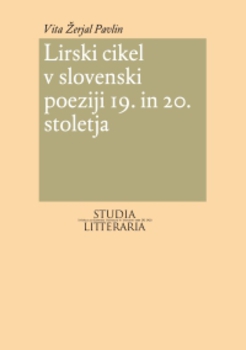Lirski cikel v slovenski poeziji 19. in 20. stoletja
Using the approaches of semiotics and text linguistics, Žerjal-Pavlin’s monograph deals with Slovenian lyrical cycles from romanticism to postmodernism. They are understood as secondary texts composed of primary texts with the intention of expanding the horizons of the textual world and, within them, further intertextually supplementing the meanings of individual texts, thereby generating a new semantic potential of the cyclic whole. Due to the intersubjectivity of textual criteria and dynamic conventions of the literary system, the lyrical cycle cannot be defined with precision. Several variables are in play: intra- and intertextual coherence, the title and the outer form, and literary conventions (such as poetry collections). Two types of the cyclic composition are distinguished: the syntagmatic and paradigmatic, the former tending towards the epical. In the first variety, the elements are arranged either in a narrative manner or they treat the theme thorugh causal relationships between the poems. The cycles of the paradigmatic type use variation to express the same theme or motive in different perspectives or contexts. The monograph also addresses problems in distinguishing the lyric cycle from the lyric poem, the sonnet wreath, and similar supra-textual compositions.
Downloads

Series
License

This work is licensed under a Creative Commons Attribution-NonCommercial-NoDerivatives 4.0 International License.
